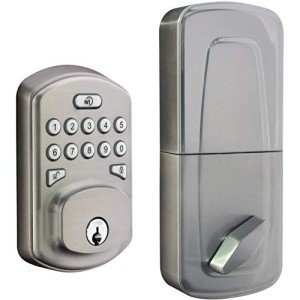Shop Lighting UK: Illuminating the Retail Experience
In the ever-evolving world of retail, the significance of shop lighting can not be overemphasized. It not just boosts the visual appeal of items however also influences customer behavior, their mood, and the general shopping environment. With developments in technology and style, shop owners in the UK have a myriad of alternatives to select from when it comes to lighting services. This article will explore the kinds of lighting offered, their benefits, and considerations for creating the best ambiance in a retail area.
Importance of Proper Shop Lighting
Effective shop lighting plays an important role in customer experience and can considerably impact sales. Here are some crucial factors why adequate lighting is vital for retail environments:
- Highlighting Products: Good lighting accentuates products, making them more enticing to clients.
- Developing Atmosphere: The best lighting can set the state of mind and stimulate emotions, influencing purchasing decisions.
- Enhancing Safety: Well-lit stores are more secure, helping customers navigate without danger of tripping or mishaps.
- Improving Visual Merchandising: Proper lighting can enhance display screens, making them vibrant and eye-catching.
Types of Shop Lighting
Shop owners can select from numerous types of lighting, each serving various functions, consisting of ambient, task, accent, and decorative lighting. Here's a breakdown of each type:
| Type of Lighting | Description | Finest Uses |
|---|---|---|
| Ambient Lighting | Provides overall illumination to the space. | General retail locations like shops and supermarkets. |
| Job Lighting | Focuses on specific areas to improve presence for tasks. | Checkout counters and dressing rooms. |
| Accent Lighting | Emphasizes specific products or screens, creating a focal point. | Display cases, art, or advertising items. |
| Decorative Lighting | Adds visual appeal and boosts the overall design. | Chandeliers and special fixtures in high-end shops. |
1. Ambient Lighting
Ambient lighting is the foundational illumination within a shop. It fills the entire area, guaranteeing that clients can see and navigate conveniently. Merchants must think about using LED panels or ceiling-mounted fixtures, as they provide energy performance and exceptional light circulation.
2. Job Lighting
Job lighting is important for areas where particular activities occur, such as checkout counters or workstations. Shop owners can set up under-cabinet lighting or track lights to focus lighting on these locations, enhancing the convenience and experience for both personnel and consumers.
3. Accent Lighting
Accent lighting helps accentuate specific products or features within the store. This kind of lighting can be attained through spotlights, track lights, or tactically positioned wall-mounted fixtures. It is particularly efficient for showcasing included products, promotional displays, or art work, assisting consumer focus where it's most required.
4. Decorative Lighting
Beyond performance, decorative lighting components include design and character to a retail area. Distinct fixtures, such as pendant lights or large chandeliers, can create a remarkable environment, particularly in boutiques or high-end merchants. These statement pieces not only illuminate however also improve the shop's branding and visual appeal.
Selecting the Right Lighting for Your Shop
When selecting lighting for a retail environment, shop owners must think about the list below aspects:
- Store Type: Different kinds of retail require varying lighting solutions. A jewelry store may need softer, more focused lights, while a grocery store might require brighter ambient lighting.
- Color Temperature: The color of light can impact the understanding of products. Warm lights (under 3000K) create a relaxing feel, while cool lights (above 3000K) can make a space feel more contemporary.
- Energy Efficiency: The use of LED lighting not only saves energy but also minimizes expenses over time.
- Versatility: Install dimmers or adjustable fixtures to adjust lighting for various celebrations or seasonal modifications.
The Future of Shop Lighting
As innovation advances, shop lighting is ending up being progressively advanced. Here are some patterns forming the future of retail lighting in the UK:
- Smart Lighting Solutions: Integrated technology enables push-button control and automation of lighting systems through smartphones or home assistants.
- Sustainable Lighting: There is a growing focus on eco-friendly options, with merchants opting for products that decrease environmental effect.
- Centerpiece Lighting: Retailers are increasingly utilizing lighting to produce particular focal points that direct customer traffic and enhance product screens.
FAQs about Shop Lighting in the UK
Q: What is the very best type of lighting for a clothes store?A: A mix of
ambient and accent lighting is generally best. Ambient lighting is necessary for total visibility, while accent lighting can assist highlight crucial pieces or collections. Q: How can I make my shop lighting more energy-efficient? A: Consider using LED lights, setting up movement sensors, or incorporating
dimmers. This reduces energy intake and expenses in the long run. Full Article : Should I utilize natural light in my shop?A: Yes, utilizing natural light can improve consumer experience whiledecreasing energy costs. Nevertheless, it is crucial to balance natural light with synthetic lighting, especially on cloudy days. Q: How typically ought to I change my shop's lighting fixtures?A: This depends upon the type of fixtures used. LED lights can last approximately 25,000 hours, while traditional bulbs
may require to be replaced more regularly. Routine upkeep checks are suggested. In a progressively competitive retail environment, shop lighting plays a vital function in shaping customer experiences and driving sales. Merchants in the UK have a wide array of options and innovations at their disposal to create the ideal atmosphere. By understanding the significance of the various kinds of lighting and how to implement them successfully, shop owners can boost their space, making shopping more pleasurable for consumers while increasing their bottom line.

